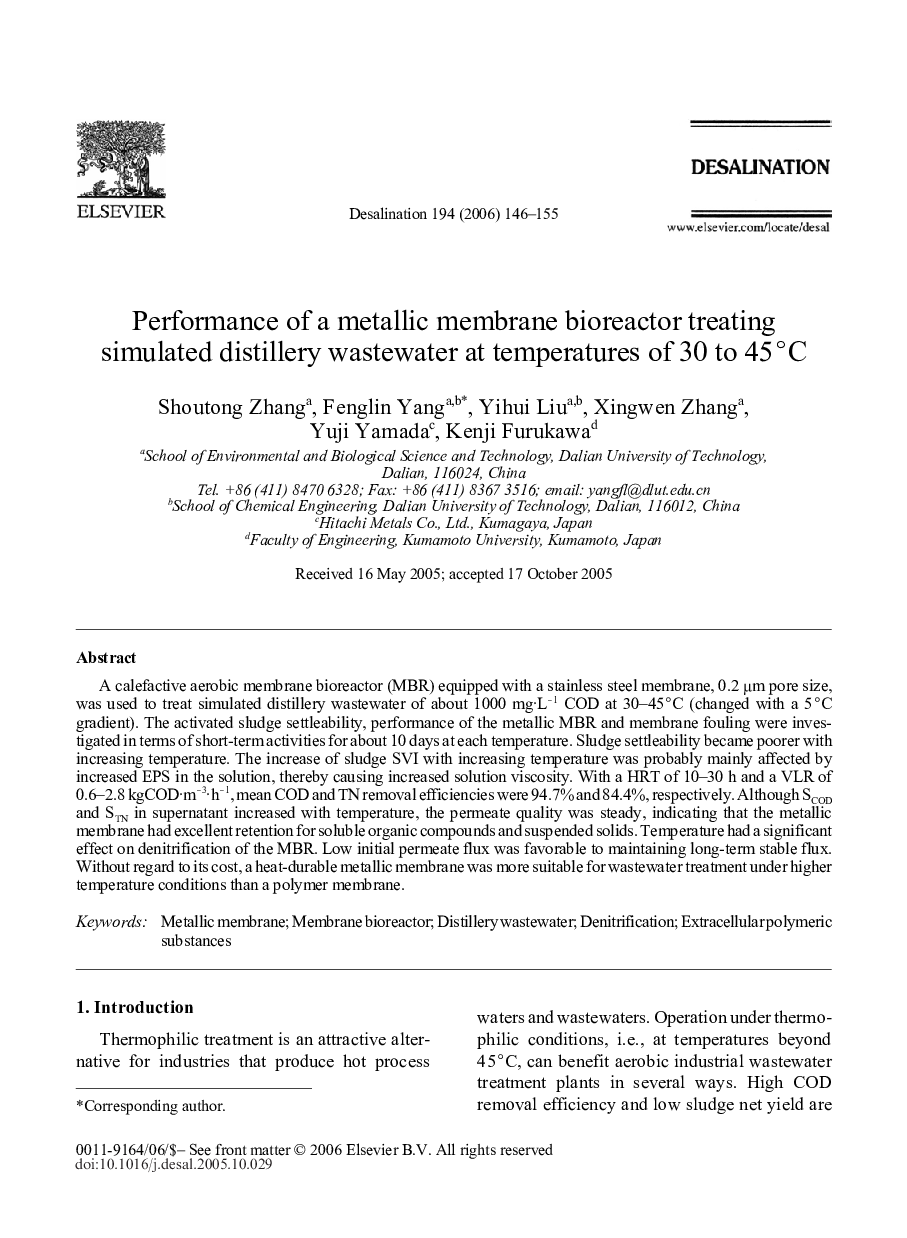| Article ID | Journal | Published Year | Pages | File Type |
|---|---|---|---|---|
| 629121 | Desalination | 2006 | 10 Pages |
A calefactive aerobic membrane bioreactor (MBR) equipped with a stainless steel membrane, 0.2 μm pore size, was used to treat simulated distillery wastewater of about 1000 mg·L−1 COD at 30–45°C (changed with a 5°C gradient). The activated sludge settleability, performance of the metallic MBR and membrane fouling were investigated in terms of short-term activities for about 10 days at each temperature. Sludge settleability became poorer with increasing temperature. The increase of sludge SVI with increasing temperature was probably mainly affected by increased EPS in the solution, thereby causing increased solution viscosity. With a HRT of 10–30 h and a VLR of 0.6–2.8 kgCOD·m−3·h−1, mean COD and TN removal efficiencies were 94.7% and 84.4%, respectively. Although SCOD and STN in supernatant increased with temperature, the permeate quality was steady, indicating that the metallic membrane had excellent retention for soluble organic compounds and suspended solids. Temperature had a significant effect on denitrification of the MBR. Low initial permeate flux was favorable to maintaining long-term stable flux. Without regard to its cost, a heat-durable metallic membrane was more suitable for wastewater treatment under higher temperature conditions than a polymer membrane.
